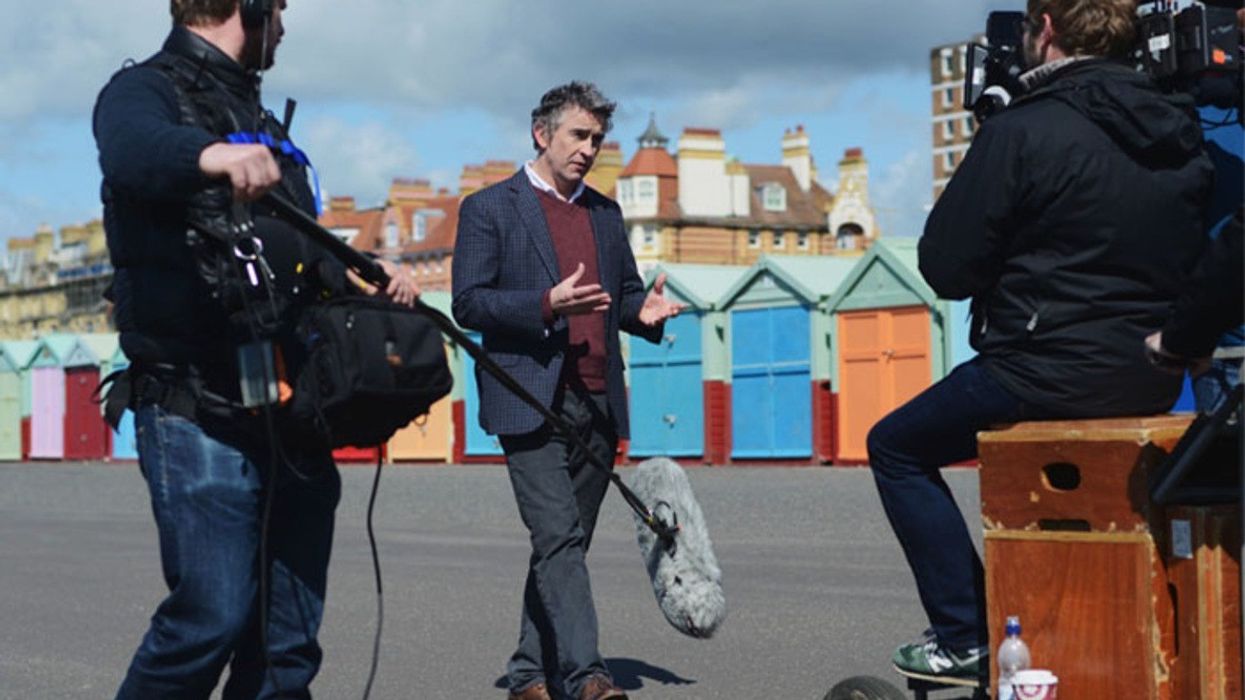The Tried and True Five-Step Method of Filming a Scene
There is a reason this Hollywood process is the best way to film a scene.

Hollywood has a specific process when it comes to filming a scene. This process is used constantly in the entire world of filmmaking for a simple reason–it works. Why change something that already has been proven to be the easiest and simplest way to film a scene?
Filming a scene is a five-step process; blocking, lighting, rehearsing, tweaking, and filming. These five steps don’t sound like a lot, but the time and consideration that goes into each of these steps can be time-consuming especially if you, as the filmmaker, are wearing many different hats on set.
Epic Light Media shoots a scene using the five-step method to show us how the formula works in action. Check out his full video below.
Block
Blocking is all about working out the actors’ movements, body positions, and body language in a scene. At this point, your actors probably don’t know all of their lines, and that’s okay. The focus of blocking is to set up where everyone is going to be and the actions that will occur, so no one is surprised or caught off guard when the camera starts rolling.
Start by placing actors in a starting spot and move them to where they need to be when a certain line is said. Think of it as a play-by-play for an entire scene. Blocking will also be the time where changes may be made to the script to make the scene make a little more sense.
Filmmaking is a creative process, so be willing to listen to the small changes being suggested for the sake of realistic dialogue sequences that feel natural while still serving the story you are wanting to tell. In the end, the director has the final say on what goes and what stays.
Lighting
Once the blocking is done, the lighting has to be set up. If you’re lighting a scene by yourself, then you might need a little more time and some patience, because it can be frustrating.
For scenes that take place inside, place the light source outside, in front of a window. This main light source will be “the sun.” Sometimes, the sun may decide it wants to dip behind some clouds and that could ruin the continuity of your shot. Always have a fake sun on set with a light placed outside the window.
Remember that you are lighting a space, not faces. Actors have to move around, so create an ambient exposure for the location. If you are wanting depth, try using a backlight such as a lamp or a light placed in the foreground. There are so many different ways to light a scene to create depth in a scene.

Rehearsal
Now it is time to hone in the action and practice the scene how you would want to film it. This is a great opportunity for everyone to run their lines, and find moments in the blocking that might be to be fixed.
Rehearsals won’t take up too much time, but they will reveal any problems the scene might have. Issues could range from blocking problems to lighting issues. That is where tweaking comes into play.
Tweaking
Since you already know what the problems are thanks to the rehearsal, fixing them should be somewhat easy. Move any lights that need to be moved because they create too many shadows.
Actors’ actions can be tweaked now, too, and they can run through their changes while the lights are being moved. While this process can be tedious, just remember to keep your cool and get done what needs to be fixed.
Filming
Filming can be out of order if you know exactly what shots you want and need to get. Film the beginning of the scene in a wide shot to establish characters, locations, and possible conflict, then film the end of the scene in a wide shot. This is a great way to start filming a scene when you have actors who don’t have their lines memorized.
After these two shots have been filmed, it is time to go in for coverage. Scenes with dialogue will require you to film one actor speaking all of their lines and actions, then doing the same with the other actor. You will need to get your insert shots once the coverage has been filmed. Insert shorts cover actions that are in the master shot, but emphasize a different aspect of those actions due to the different framing. It will make the scene dynamic, but they are completely optional.
Never film inserts first because you want to get usable footage in case all hell breaks loose and filming has to stop immediately. Follow the typical formula for shooting: wide, medium, then tight.

After editing the footage together in the editing room, you have your final cut of the scene. If you blocked, lit, rehearsed, tweaked, and filmed the scene in wide, medium, and tight shots, then you should have a final product that you are happy with.
Following this method will take some of the stress out of your filmmaking life because the process allows room for fixing problems that you may have never thought of. Filmmaking is a creative process that is trying to speak through visual representation. Some ideas will need to be fine-tuned to translate in the scene, so take your time to make a shot that encapsulates everything you wanted it to be.
Are there any steps that you struggle with? Let us know how you face these problems in the comments below!
Source: Epic Light Media














